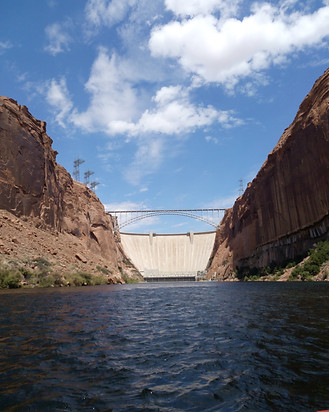Research Interests
My research strives to quantify the degree to which humans impact aquatic ecosystems. I approach this goal from multiple taxonomic levels, including the organism, population, and community. Macroinvertebrates and plants act as excellent bell-weathers for the health of aquatic and wetland ecosystems, and I employ population and community ecology techniques and theories to help document and explain patterns of human impacts.
I have two primary foci within this big-picture of human-environment interactions: (1) impacts of flow management on macroinvertebrate communities in aquatic and wetland systems, and (2) ecosystem-level interactions between aquatic, wetland, and terrestrial habitats.
Current and Previous Research
My dissertation research focused on impacts of large-scale dams on aquatic macroinvertebrate population and community dynamics. I use both river and floodplain systems to investigate the impacts of dams on (a) riverine macroinvertebrate community structures and (b) floodplain macroinvertebrate population dynamics. My research uses a combination of long-term data sets, field collections, micro- and mesocosm experiments, and lab analyses in order to gain a holistic understanding of aquatic systems. Specifically, my research examines:
-
Macroinvertebrate community responses to flow fluctuation in regulated rivers. To examine effects of annual and daily flow fluctuations on the macroinvertebrate community of a 65-km stretch of river, I used a long-term (11-year) data set and multivariate community analyses to document significant impacts of both annual and daily flow variation on the macroinvertebrate community structure. This project was completed in collaboration with the National Park Service.
-
Distributional, behavioral, and physiological alterations in predaceous diving beetles in a regulated river floodplain. Using a combination of field collections, microcosm studies, and laboratory analyses, I documented distributional, behavioral (i.e., dispersal pattern), and physiological (i.e., lipid and protein content) alterations to Neoporus sp. (Coleoptera: Dytiscidae) populations within floodplains. These changes were directly related to significant changes in flow patterns following 60 years of river regulation.
-
Distribution and impacts of shallow hyporheic anoxia in Glen Canyon. As a postdoctoral researcher at the Springs Stewardship Institute, I investigated the distribution and biotic effects of anoxic sediments in the Colorado River below Glen Canyon Dam. This project involved macroinvertebrate field mesocosm studies, GIS analysis, and water and soil chemical analyses.
Future Directions
I am also extremely interested in the direct biotic linkages between (1) microhabitats within aquatic and wetland systems and (2) aquatic/wetland systems and the surrounding terrestrial landscape. I investigate these environmental aspects from an organismal biology standpoint as well as from a human influence perspective.
-
Microhabitat linkages within wetland and aquatic systems. A variety of microhabitats comprise wetland and aquatic systems, many of which may support distinctly different macroinvertebrate and plant assemblages. Additionally, microhabitats are often differentially affected by human actions. This research focus can be viewed from both an ecological/natural-history and an anthropogenic influence perspective.
-
Ecosystem-level linkages between aquatic, wetland, and terrestrial systems. To complement the microhabitat-scale focus discussed above, I also plan to investigate larger-scale questions involving direct linkages between aquatic, wetland, and terrestrial system(s). Many aquatic invertebrates begin their life cycles in water and complete their life cycles on land. Such biomass shifts are largely understudied and underappreciated in conservation and management planning. Thus, the importance of aquatic systems to the greater ecosystem is often overlooked, particularly in light of climate change.

Glen Canyon Dam on the Colorado River, Arizona

Macroinvertebrate sampling on the floodplains of the Savannah River, Georgia